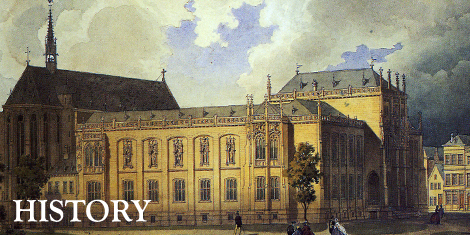
FERDINAND FRANZ WALLRAF
AND JOHANN HEINRICH RICHARTZ
The two men are always named in one breath, but it is unlikely that they ever met. They even share a twin grave at the Melaten Cemetry in Cologne, but the most that Johann Heinrich Richartz could have seen of Ferdinand Franz Wallraf during their lifetimes would be a figure in the distance, because more than a generation separated the founder and the patron. Yet one thing united them: they were both selfless benefactors to the city.

THE COLLECTOR
The canon and university professor Ferdinand Franz Wallraf (1748 – 1824) was a fanatical collector. Indeed, collecting and preserving were the main purposes of his life – and that at a time when the French Revolution was toppling handed-down values right across Europe.
And the Revolution raged in Cologne, too. Almost 40 churches were torn down in the name of secularisation, while the artworks in the rest were cast out onto the streets. Precious reliquary shrines were melted down, painted panels burnt as fuel. Through his efforts and sacrifices, the learned art lover Wallraf saved what he could from the churches and cloisters in what once was “Holy Cologne”. Nothing that was connected with Cologne’s art and history was to be lost.
When Wallraf died in 1824, he bequeathed his entire estate to the city – an incredible treasure, for it contained almost 10,000 paintings, drawings and woodcuts, around 13,000 books, over 3,000 seals, some 1,000 manuscripts and deeds, numerous antiques, countless coins, cut stones, minerals, fossils, and much more.

THE FOUNDER
For many years the city had to make do with makeshift quarters for the Wallraf Collection, until in 1854 the Cologne merchant and buskin dealer Johann Heinrich Richartz (1795 – 1861) donated 100,000 thalers for a museum building. But just like today: the money was not enough. So Richartz donated another 10,000 thalers for the blocks of tuff stone that were needed, then another 12,000 for parquet floorings, followed by 24,000 thalers for the frescoes in the stairway, and so it went on.
But he was not to witness the opening: shortly before the ceremonial opening of the museum in 1861, the generous patron died. Although “his” building was destroyed during the Second World War, the memory of Johann Heinrich Richartz and his munificent patronage lives on in the name of the “Wallraf Richartz Museum”.


